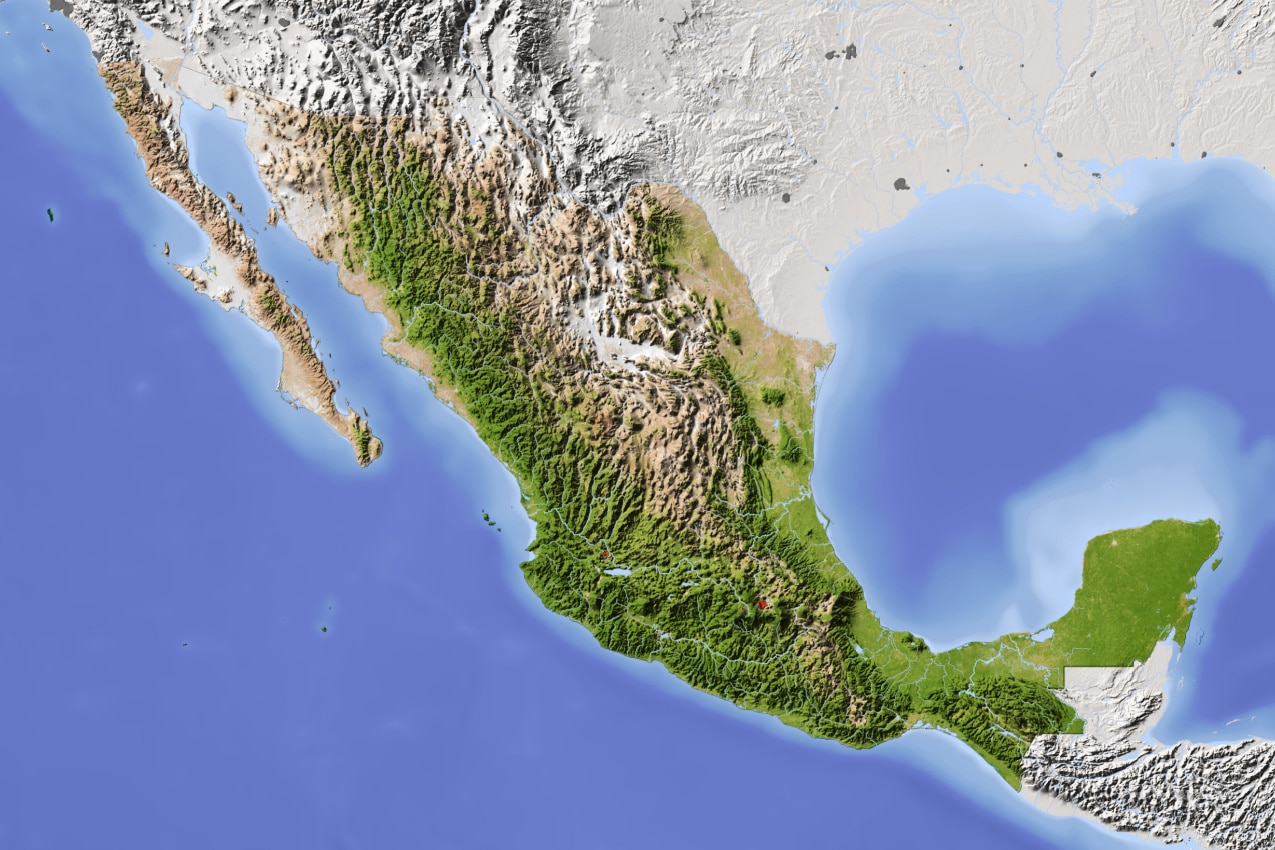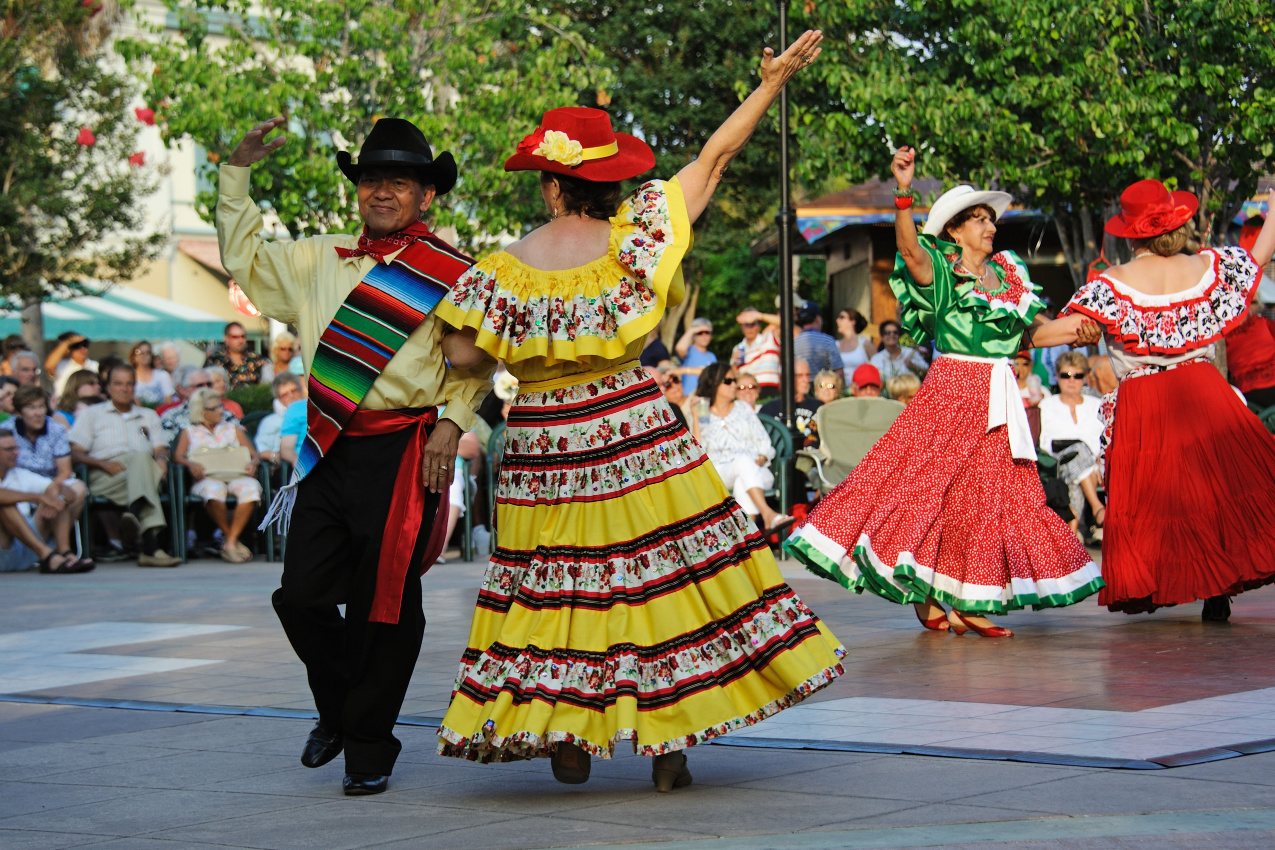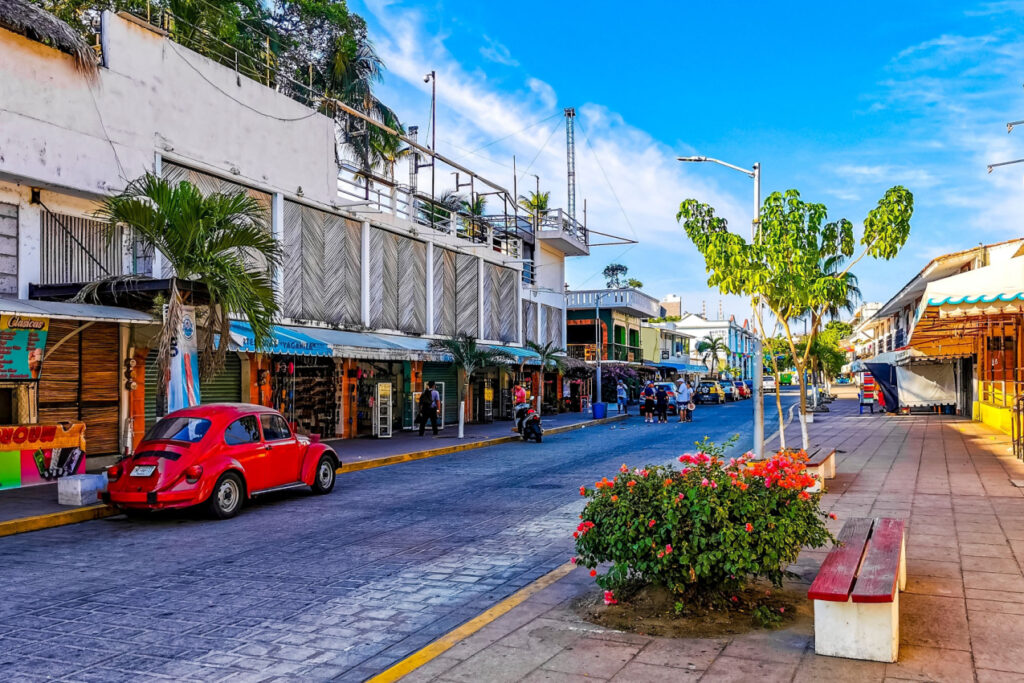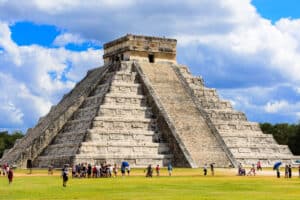When is the right time to visit this enchanting country?
If Mexico were a city, it would be much easier to give a straightforward answer. However, since it’s a vast country with very diverse typography, the right time to visit will depend on various factors — including your travel preferences.
In summary, here are the best times to visit Mexico:
- Best time to visit Mexico’s Hot land states: December to April
- Best time to visit Mexico’s Temperate states: March to May or September to November
- Best time to visit Mexico’s Cold land states: June to August or December to February
Visiting a Specific mexican city? You might also find these guides helpful:
- Best time to visit Cozumel
- Best time to visit Mexico City
- Best time to visit Playa Del Carmen
- Best time to Visit Cancun
- Best time to Visit Tulum
- Best time to visit Oaxaca
- Best time to visit Puerto Vallarta
Mexico’s Topography: A Kaleidoscope of Wonders

Mexico is a topographical wonderland of mountains, beaches, forests, and deserts. The typography of Mexico is divided into three parts or lands — the hot land (Tierra Caliente), the temperate land (Tierra Templada), and the cold land (Tierra Fría).
The hot land, as the name suggests, features areas in Mexico with year-round hot weather. The hot lands are mostly coastal states and inland regions, including Colima, Guerrero, Jalisco, Michoacán, Nayarit, Sinaloa, Tabasco, Campeche, Quintana Roo, Yucatán Peninsula, and some parts of Veracruz, and Oaxaca.
The temperate land is more central, offering a mild, bearable climate all year round. The so-called temperate states are Aguascalientes, Mexico City, Durango, Guanajuato, Hidalgo, State of México, Morelos, Nuevo, Puebla, Querétaro, San Luis Potosi, Tlaxcala, Zacatecas, and parts of Baja California, Baja California Sur, Chihuahua, and Nuevo León.
The cold lands are mountainous areas at higher altitudes. And, you’ve guessed it, the weather gets cold, even below freezing in wintertime. The chilly Mexican states include some parts of Chihuahua, Coahuila, Durango, Guanajuato, Hidalgo, State of México, Michoacán, Puebla, Querétaro, San Luis Potosí, Tlaxcala, and Zacatecas.
Hot Land Climate
The heat in the hot lands is scorching, so pack your shades and sunscreen!
Temperatures reach over 86°F (30°C) in the summer and dip to the mid-80s°F (mid-20s°C) in the winter — which is definitely abnormally warm to be classified as the winter many of us are used to.
Rain falls from May to October, but the showers are brief, and in the afternoon, nothing too serious that would ruin your trip — think of them as a lovely respite from a day under the hot sun.
In the hot lands, tourists can enjoy the lush tropical jungles and mesmerizing beaches and partake in water activities like scuba diving and surfing — unless they’re afraid of sharks , that is.
While exploring this sunny wonderland, remember to stay hydrated (drink only bottled water) and wear breathable clothing.
Best Time to Visit Mexico Hot Land Climate
The optimal time to visit the hot lands is December to early April.
In the winter, you can enjoy warm temperatures without the intense heat of summer. The water is calm and offers excellent conditions for paddleboarding, snorkeling, or simply swimming.
The best part about traveling during this period is that you’ll get to see many species of whales migrating on their epic ocean journeys — and you can hop on a tour boat to see these magnificent gentle giants up close.
Early spring offers comfortable temperatures for exploring ancient ruins, historic towns, and vibrant local markets without the sweltering heat.
Temperate Land Climate
In the temperate lands, it’s all about balance — pleasant summers and cool winters.
During the summer, temperatures typically range from 68°F to 77°F (20°C to 25°C). The warm weather is bearable enough to enjoy outdoor adventures without getting a heatstroke!
In winter, the temperatures drop to 60°F (15°C), so if that’s the time you pick, pack some warm clothing. The rainy season lasts from May to October, like in the hot lands, but it’s characterized by mild and soothing drizzle.
When it’s raining, you can relax in some charming cafe, sipping Mexico’s traditional hot chocolate. On days when the skies are blue, on the other hand, you can enjoy the mountain landscapes, go hiking, visit vineyards, and immerse yourself in Mexico’s cultural heritage.
Best Time to Visit Mexico’s Temperate Land Climate
The ideal time to take a trip in the temperate lands would be spring or fall — specifically March to May or September to November.
Nature is calling, so go for a hike, visit a national park, and immerse yourself in the lush landscapes and blossoming flora.
Spring and fall provide beautiful weather for city touring and attending Mexico’s most noteworthy festivals — but we’ll come back to that later, so stay tuned!
Fall is also the best time to tour wineries and sample some of the country’s most delectable wines. Tres Races in Guanajuato is a fantastic vineyard to visit, not only for its wine but also for its beautiful traditional Mexican cuisine.
Cold Land Climate
The cold lands of Mexico are a refreshing escape from the scorching Mexican sun.
Summer here is quite pleasant, with daily temperatures ranging from 60°F (15°C) to 70°F (21°C). Instead of beaches, tourists here can enjoy lush green meadows, gushing waterfalls, and stunning valleys.
In the winter, the temperatures may drop below freezing. Snow is unlikely to fall in the cities, but it will almost certainly fall on the mountain peaks. If you enjoy snow, you can participate in outdoor activities such as hiking and skiing on some of the most beautiful mountain tops.
Remember to pack wisely — this is called Tierra Fría for a reason! Dress in layers of warm clothing to stay toasty during your trip.
Best Time to Visit Mexico’s Cold Land Climate
The perfect time to visit the cold lands is from June to August or December to February.
Summer in the cold lands is a welcome respite from the blistering sunshine in the lower latitude areas. Summer brings out lush vistas, alpine meadows, and cascading waterfalls, ideal for hiking and exploring nature trails.
While summer is the most popular time to visit the icy country, winter enthusiasts can also arrange a vacation during the cooler months for snowy adventures and seasonal sports such as skiing.
Mexi-Fun Fiesta: The Best Time to Immerse Yourself in Mexico’s Vibrant Festivals

Mexicans are known for their festivities, and if you want to learn why firsthand, here are some dates you should write down.
- Day of the Virgin (12th December, celebrated in Mexico City)
- Day of the Dead (1st & 2nd November, celebrated in Mexico City, Oaxaca, Patzcuaro, Mixquic, San Miguel de Allende, Xcaret, Aguascalientes)
- Independence Day (15th September, celebrated in Mexico City)
- Festival of Mexico in the Historical Center (April 8-27, celebrated in Mexico City)
- Carnival in Veracruz & Mazatlán (8-13th February, celebrated in Veracruz)
- Cinco de Mayo (5th May, celebrated in Puebla)
- Mazatlán Carnival (16th to 21st February, celebrated in Mazatlán)
The Best Time to Visit Mexico for Lower Prices & and a Crowd-Free Experience
The ideal time to score lower prices and fewer crowds in Mexico is in the shoulder and off-season.
Mexico’s shoulder season is typically around spring and fall — late April, early June, or late September to early November. The prices in the shoulder season are affordable, plus you won’t feel overwhelmed by big flocks of tourists.
Mexico’s off-season is during the summer and early fall — from June to mid-September. Prepare for the best deals on lodging, airfare, and tours. In addition, the off-season has even fewer tourists than the shoulder season, so if you’re an introvert looking for a laid-back vacation, this would be the perfect time to visit Mexico for you.
A Note on Traveling in the Off-Season
There are a couple of things you need to be aware of about the off-season.
First, summer in some parts of Mexico can get really hot, which might not be bearable for everyone.
Plus, it’s the time of the year with the most frequent rainfall and, in coastal locations, the highest risk of hurricanes. The peak hurricane season runs from August to October, so stay updated on weather forecasts and plan your trip appropriately.
Additionally, if you visit less popular tourist locations or smaller towns during the low season, expect certain restaurants, stores, or sights to be closed or have shortened operation hours.
Key Takeaways: The Best Time to Visit Mexico for You

Are you ready to pack your bags for the perfect Mexican experience? Where will you book your dream vacation — in the hot, temperate, or cold lands?
The hot lands are a paradise if you are a beach lover and jungle adventurer. Here, you can enjoy year-round sunshine and pleasant temperatures — but the optimal time for tourism would be in the winter and early spring. Dive into crystal-clear waters, surf the waves, or simply relax on the sandy beaches of Cancun, Playa Del Carmen, Cozumel, and many more breathtaking locations.
The temperate lands will be ideal for you if you want balanced weather conditions — not too hot or cold. The ideal time for traveling here would be in the spring or fall. You can hike, visit beautiful colonial towns, or take a sip of wine in the region’s most famous vineyards.
The cold lands are the best option if you want to escape the scorching Mexican heat. Book a trip in the summer and let Nature mesmerize you with its lush landscapes, alpine meadows, and flowing waterfalls. Better yet, book a trip in the winter and catch the beauty of the snowfall that blankets the majestic mountain peaks.
If you want to keep your travel costs low, book your vacation during the shoulder season or off-season, which runs from late spring to mid-fall. However, if you thrive in the hustle and bustle of peak season, December to April is the best time to visit.
More Mexico Travel Guides
We have more useful articles to help you stay safe as a tourist in Mexico:
- How to rent a car in mexico
- Mexico’s driving requirements
- How to travel safely in mexico
- Laws in Mexico for Tourists
- Mexico’s Gay & LGBTQ Laws
- How to avoid getting sick in mexico
- How to stay safe as a solo female traveller in mexico
- How to avoid getting killed as a tourist in mexico
- How to avoid getting Kidnapped by mexican cartels
- The most common natural disasters in mexico
Happy travels!



